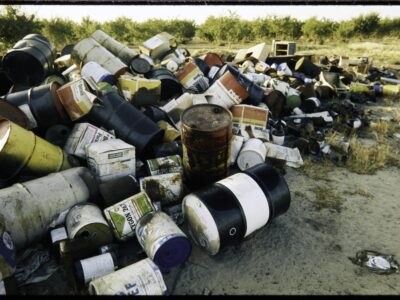California’s Attorney General Steps Up Environmental Enforcement Efforts

A recent development worth noting is California Attorney General Kamala Harris’ increased profile when it comes to environmental enforcement.
Harris, the first woman and minority Attorney General in California history, had a busy first year in office. Her razor-thin election win in November 2010 took over a month to be confirmed, delaying her transition from San Francisco District Attorney to California’s chief law officer. Upon taking office as Attorney General a year ago, Harris was immediately confronted by multi-million dollar budget cuts imposed upon her Division of Law Enforcement by her predecessor, newly-elected California Governor Jerry Brown. Finally, much of Harris attention in her first year as Attorney General has necessarily focused on high-profile negotiations with the nation’s banks over the calamitous U.S. mortgage meltdown. (Harris played a key role in the recently-announced, 49-state, $26 billion settlement with five major banks, as reported in a New York Times article this week.)
So Attorney General Harris could be excused if her actions on the environmental front paled by comparison during her first year in office. But that situation has changed dramatically in recent months. California’s Attorney General has broader constitutional, statutory and common law powers than any other state A.G. And lately Harris has used those powers vigorously on a variety of environmental law and policy fronts. Some examples:
- Late last year, Harris intervened in a lawsuit brought under the California Environmental Quality Act against Riverside County, challenging the county’s approval of an industrial project near a low-income, minority neighborhood that’s already disproportionately affected by diesel exhaust and noise pollution that would be exacerbated by the project. The Attorney General’s complaint in intervention suggests that environmental justice will be one of her top environmental objectives, and that she will continue her office’s longstanding tradition of aggressive enforcement of CEQA. Both are most welcome developments.
- Harris has similarly signalled that she will aggressively enforce California’s landmark Safe Drinking Water and Toxic Enforcement Act, better known as Proposition 65. Two weeks ago, her office announced the settlement of a Proposition 65 lawsuit the Attorney General brought against the manufacturer of popular “Brazilian Blowout” hair products. That settlement requires the company to warn consumers and hair stylists that the hair smoothing products involved emit hazardous formaldehyde gas. The settlement requires significant changes to the manufacturer’s website and payment to the state of $600,000 in fees, penalties and costs.
- Last month, Harris joined a lawsuit against the San Diego Association of Governments, challenging the environmental impact report the Association had prepared in connection with its recently-adopted Regional Transportation Plan and Sustainable Communities Strategy.

San Diego’s I-5-I-8 Interchange The Plan and Strategy, in turn, are key components of the San Diego region’s efforts to meet California’s overall greenhouse gas reduction targets. Under SB 375, state law requires improved integration of local land use and transportation policies, with the ultimate goal of reducing urban sprawl, lengthy commuting patterns and aggregate vehicle miles traveled–all in furtherance of reducing California GHG emissions. San Diego’s proposed Regional Transportation Plan and Sustainable Communities Strategy are the first to be promulgated under SB 375; as such, they’ll serve as an important precedent–for good or ill–as other regions of the state work to implement SB 375’s mandates. Attorney General Harris’ controversial lawsuit suggests she is serious about ensuring that California local governments take those responsibilities seriously.
While Harris is making quite an impact on California environmental policy through these independent litigation initiatives, perhaps her most important environmental role in 2012 will be in providing vigorous and effective legal representation to state environmental agencies like the California Air Resources Board, Coastal Commission and State Water Resources Control Board. Currently at the top of that list: the Attorney General’s pending appeal to the U.S. Court of Appeals for the Ninth Circuit from last December’s federal district court decision in Rocky Mountain Farmers Union v. Goldstene. That decision (on which I previously commented) invalidated the ARB’s Low Carbon Fuel Standard and certain other ARB initiatives implementing AB 32 (California’s Global Warming Solutions Act) as being unconstitutional under dormant Commerce Clause principles.
Attorney General Harris and her talented staff of career environmental litigators have a long and ambitious agenda. Their record to date is impressive, and my strong sense is that they’re up to the environmental law and policy challenges that lie ahead.
Reader Comments
2 Replies to “California’s Attorney General Steps Up Environmental Enforcement Efforts”
Comments are closed.







AG Harris uses a combination of racebait, junk science, and ecoignorance to drive people and businessess out of California. The California Environmental Bar deserves a lot of credit for this sorry situation and should at least demonstrate a simple modicum of humility and respect for people who are suffering.
AG Harris uses a combination of racebait, junk science, and ecoignorance to drive people and businessess out of California. The California Environmental Bar deserves a lot of credit for this sorry situation and should at least demonstrate a simple modicum of humility and respect for people who are suffering.